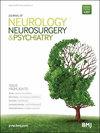STUDIES IN DENERVATION: B.-THE CIRCULATION IN DENERVATED DIGITS.
引用次数: 12
Abstract
IN his address, The Relation of Physiology to Medicine, Lewis (1939) has suggested that one of the functions of a good hypothesis is to stimulate further investigations. Such an hypothesis was presented by Lewis and Pickering (1936) in an endeavour to explain why sympathectomized limbs stay warm while denervated digits become cold. The present paper, which was directly stimulated by their hypothesis, may be introduced by a brief survey of the literature to ascertain if any clues to an alternative explanation can be found. Previous to the work of Lewis and Pickering only Goltz (1874) seems to have been impressed by the paradoxical nature of the facts. He found that after sciatic nerve lesions in dogs the denervated limb was first warm but became cold in the course of two to four weeks. Claude Bernard, however, had shown that sympathectomy caused vasodilatation in the rabbit's ear. To explain this Goltz conjectured that the initial vasodilatation in the limbs of his dogs and the vasodilatation in the rabbit's ear might be due to traumatic excitation of sympathetic vasodilator fibres. He therefore designed the crucial experiment of stimulating the sciatic nerve and found that this produced vasodilatation. Bayliss (1901) was later to show that the result was due to anti-dromic impulses but Goltz, because of the unfortunate (but not uncommon) coincidence of a mistaken theory and a misinterpreted crucial experiment, was lead into the error of believing that the coldness of limbs following section of peripheral nerves was due to a paralysis of sympathetic vasodilator fibres. Nevertheless, despite the seventy years that have passed, ready assent may still be given to Goltz's opinion of the problem for he states that it caused him much worry and many sleepless nights. Lewis and Pickering in their paper of 1936 resolved the problem with Euclidian succinctness. They state " . . . while loss of sympathetic supply causes the corresponding fingers to be in general warmer than they otherwise would be, loss of all nerve supply causes the corresponding fingers to be in general colder than they otherwise would be.去神经支配的研究:b .去神经指的循环。
本文章由计算机程序翻译,如有差异,请以英文原文为准。
求助全文
约1分钟内获得全文
求助全文

 求助内容:
求助内容: 应助结果提醒方式:
应助结果提醒方式:


